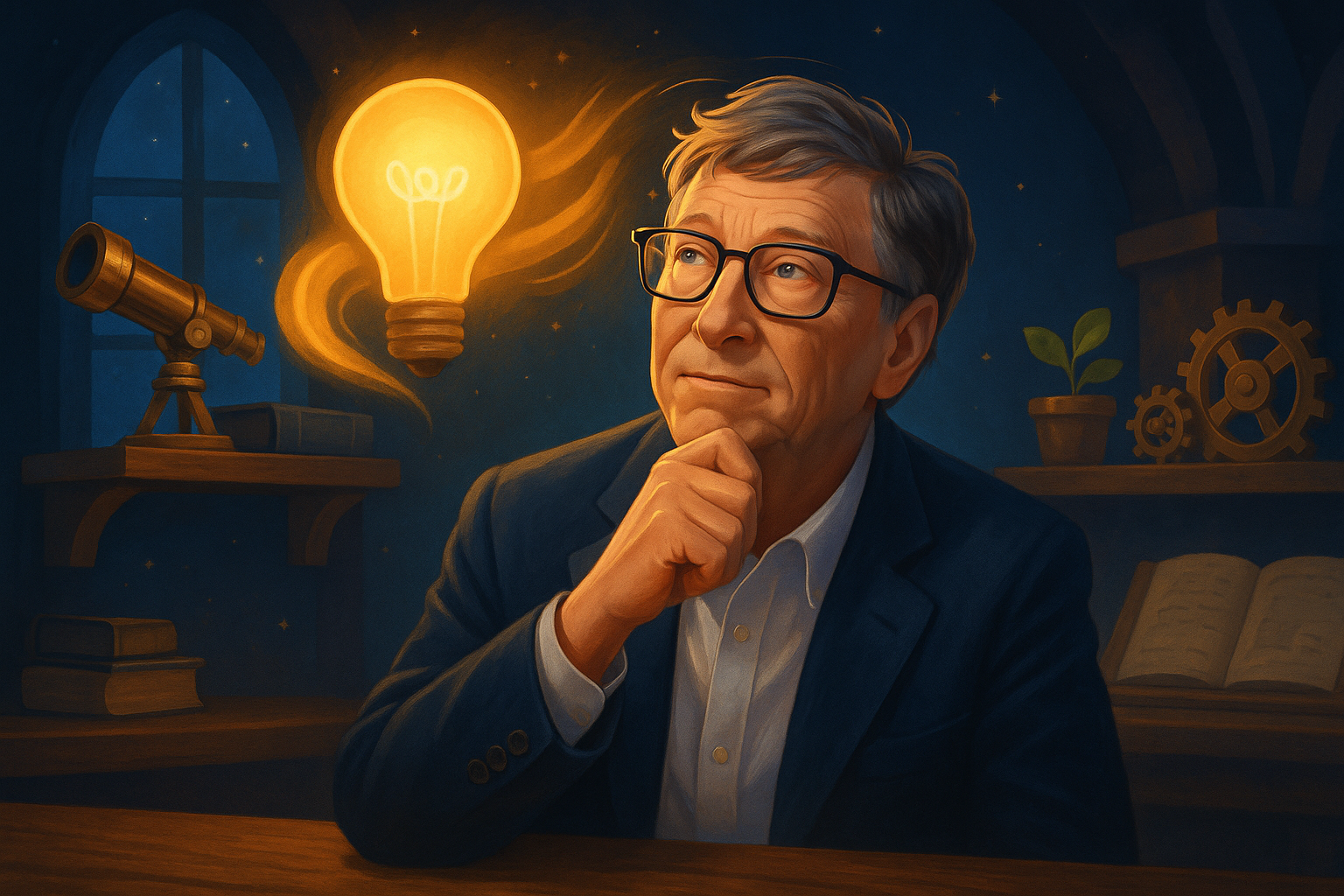On October 28, 1955, in Seattle, Washington, a boy was born to a prominent lawyer and a schoolteacher. His name was William Henry Gates III.
He was curious, competitive, and restless. At 13, he encountered a computer at Lakeside School — a rare machine in 1968. While most kids played outside, Bill spent hours learning code, debugging programs, and exploring possibilities.
“I was lucky to be in the right place at the right time. But I also seized the opportunity.”
A Friendship and a Dream
At Lakeside, Bill met Paul Allen, a fellow computer enthusiast. They bonded over long nights in front of glowing screens and dreams of what computers could become.
Together, they hacked, experimented, and even got banned for exploiting the school computer system — only to be rehired to help fix it. The future had already begun.
Dropping Out to Build the Future
In 1973, Gates entered Harvard University, but his mind was elsewhere. He spent more time in the computer lab than in class.
When he and Paul Allen saw the Altair 8800, one of the first personal computers, they recognized a revolution in the making. They created software for it — BASIC — and founded Microsoft in 1975.
“If you are born poor it’s not your mistake, but if you die poor it’s your mistake.”
The Rise of Microsoft
Bill Gates dropped out of Harvard to build Microsoft full-time. His vision was simple but radical: a computer on every desk and in every home.
Microsoft licensed its operating system, MS-DOS, to IBM in 1980 — a deal that became the cornerstone of its empire.
Through the 1980s and 1990s, Windows became the language of the digital world. Gates’s drive, often relentless and even ruthless, turned Microsoft into a software giant.
“Success is a lousy teacher. It seduces smart people into thinking they can’t lose.”
The Rivalries and Scrutiny
With success came rivals. Apple’s Steve Jobs sparred with Gates in one of the great duels of technology. Courts scrutinized Microsoft for monopoly practices. Gates was often portrayed as brilliant but cutthroat — a mastermind who shaped the rules of the digital game.
“Your most unhappy customers are your greatest source of learning.”
A Shift in Purpose
In 2000, Gates stepped down as Microsoft’s CEO, though he remained deeply involved in its vision. But a new chapter was beginning.
With his wife, Melinda, he founded the Bill & Melinda Gates Foundation, turning his wealth toward global health, education, and poverty alleviation.
The man once known for monopolies now focused on malaria nets, vaccines, and sanitation.
“As we look ahead into the next century, leaders will be those who empower others.”
The Later Years
Even after stepping back from Microsoft, Gates remained a guiding force in technology and philanthropy. He collaborated with Warren Buffett to launch the Giving Pledge, urging billionaires to donate their fortunes for the greater good.
In 2020, as the world faced the COVID-19 pandemic, his long-standing warnings about global health crises seemed prophetic.
“Don’t compare yourself with anyone in this world. If you do so, you are insulting yourself.”
The Legacy of Bill Gates
From a restless boy in a computer lab to the world’s richest man, from tech magnate to philanthropist, Gates’s story is one of ambition, reinvention, and responsibility.
He built tools that transformed how humans live and work, then turned his gaze toward saving lives.
“If you think your teacher is tough, wait till you get a boss.”
